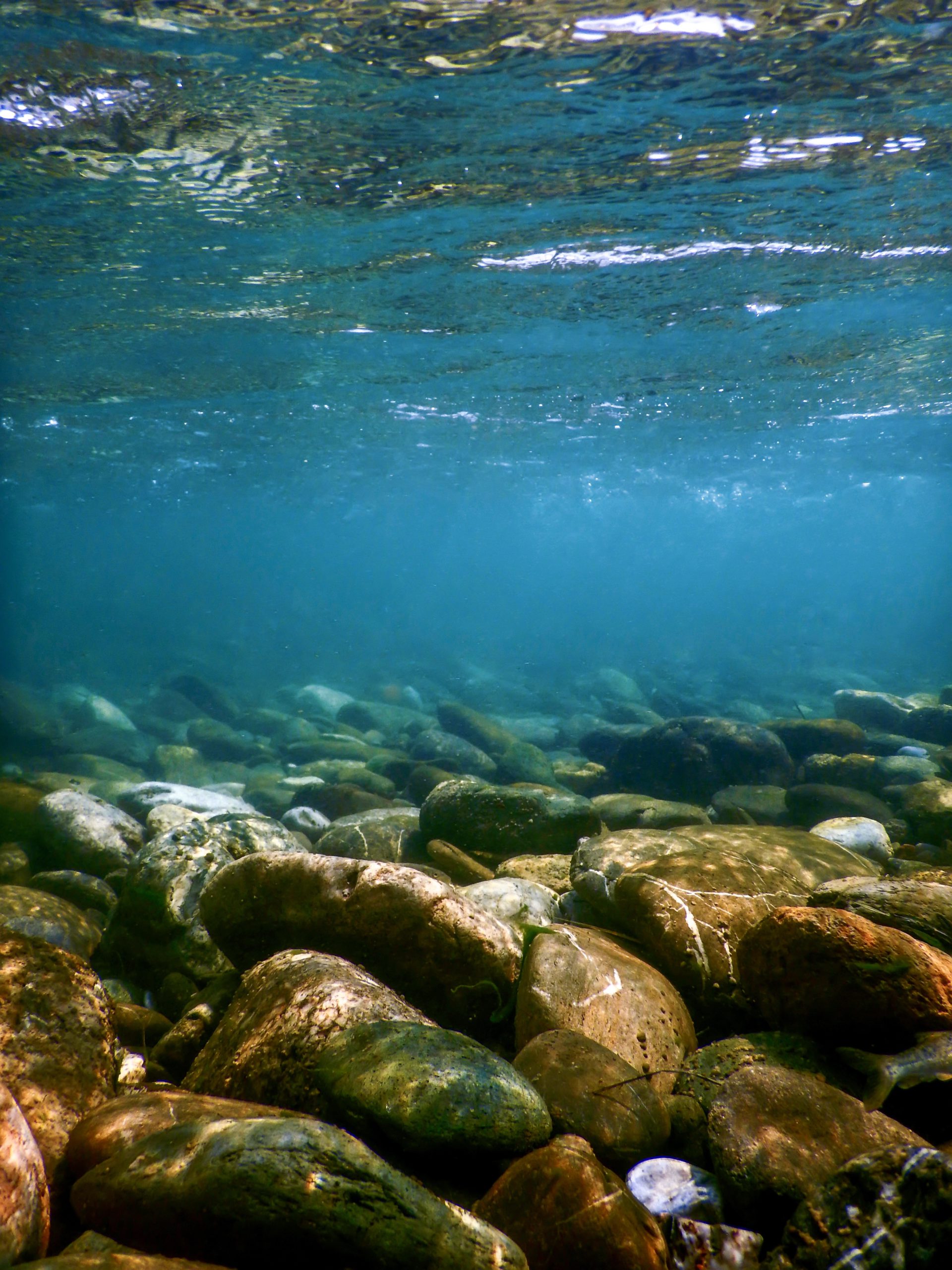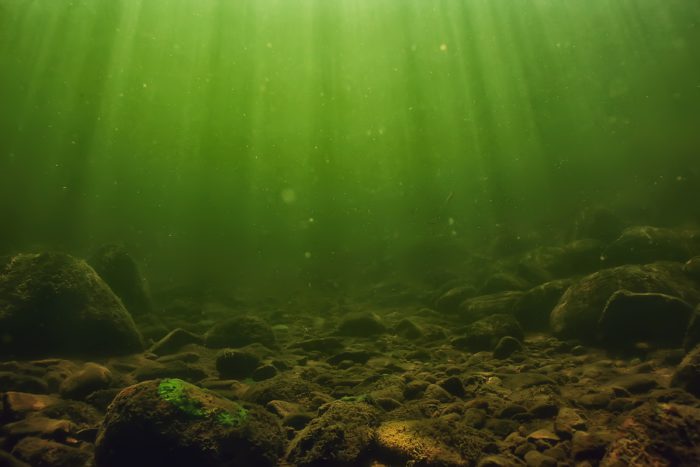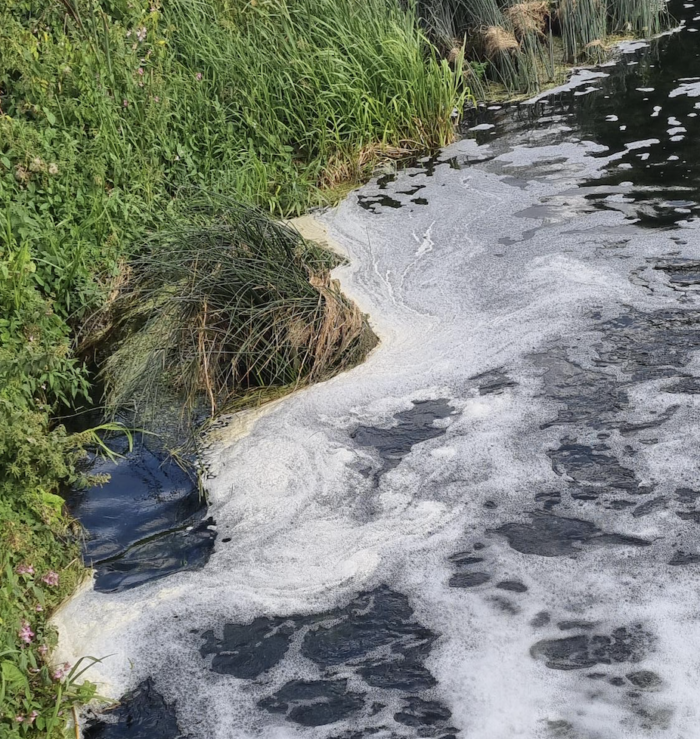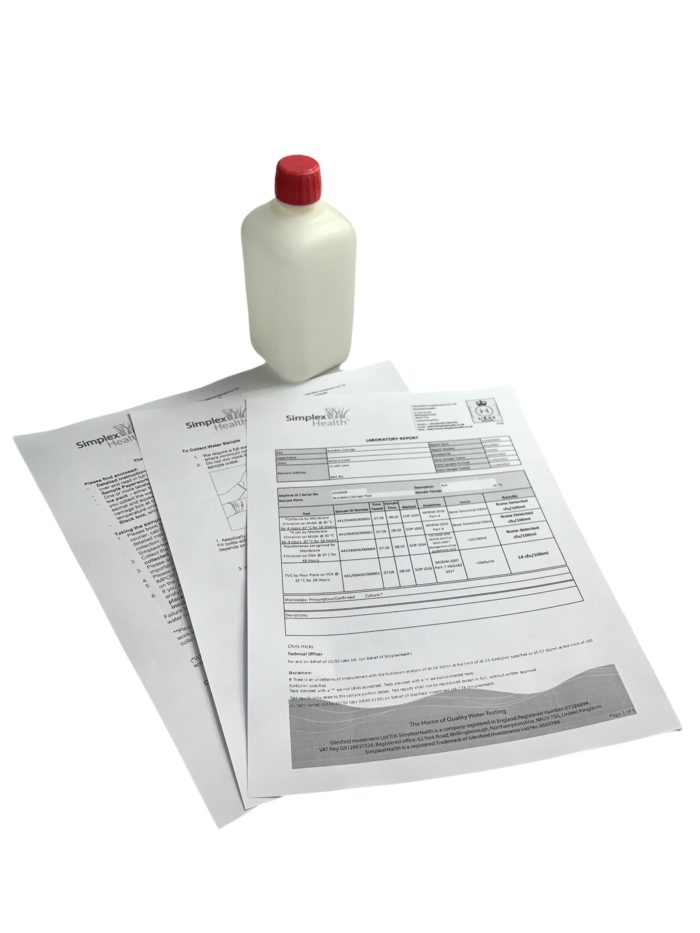What are the causes of pollution in rivers & lakes, how to check for visual signs of pollution and recommended tests

More people are aware of the importance of the water quality in rivers and lakes. They are vital for biodiversity and to human health and well-being. We have supported a number of organisations to detect river & lake pollution using various tests including testing for bacteria like coliform/E.coli & enterococci as well as nutrient pollution (testing levels of phosphate, nitrate, ammonia). As an example view our page about the Big Windermere Survey.
Whilst testing the water is the most accurate way to detect pollution, there are also some obvious signs that a water body is contaminated. Below you find some information on what causes pollution, how to ‘spot’ potential pollution using visual signs and how to test for pollution in rivers & lakes.
River pollution can be caused by:
- Sewage spills – water companies are allowed to discharge (raw, grey water, mixed) sewage during and just after big storms into rivers and lakes. Spills can also be caused by incorrect plumbing in homes & businesses as well as poorly maintained septic tanks.
- Nutrient pollution – naturally, most rivers and streams have a low amount of nutrients like nitrates & phosphate allowing specially adapted wildlife to flourish. When the amount of nutrients increases (mainly caused by pesticides & fertilisers), the water changes resulting in an increased growth of algae, fungi and duckweed. The knock-on effect of this is a loss of light and a change of oxygen levels in water. Because of these changes, naturally occurring wildlife often struggles to survive or in the worst case, completely disappears.
- Industrial and chemical waste – from industrial processes may be (accidentally or purposely) discharged into rivers. Pollutants like cyanide, zinc, lead, copper, cadmium and mercury (to name a few) are absorbed by fish and other animals and then passed down the food chain.
- Warm water – when water is used for cooling processes, large amounts of warm water are discharged, raising the temperature and affecting the natural balance of life in the water.
- Oil – sits like a film on top of the water and prevents oxygen from entering the water. Bad oil spills secially affect the feathers of water birds.
- Microplastics & microfibres, car wax, cooking oils, paint thinners, medications etc, the list of potential pollutants is long – an increasing amount of other chemicals are polluting water bodies; by being washed down the toilet, chucked down the drain or from urban pollution (waste from roads, car wash etc run off into rivers following rain fall and storms).
Sometimes pollution comes from a ‘single’ point, like a tube or pipe. Diffuse pollution tends to come from a large area or over long period of time. This is mostly caused by soil erosion, livestock on river banks, run off from farms, fields, roads as well as from urban areas.
There can be many visual signs to detect pollution. Once these are detected, a laboratory test can provide certainty:

- Sewage related debris, like wipes, sanitary products, tissue paper & cotton buds can be a sign of sewage discharge (causing high amounts of coliform & E.coli bacteria in the water).
- A noticeable odour of sewage, caused by a build up of sulfur-reducing bacteria, often described as a rotten egg smell.
- Sewage fungus is a sign of serious pollution – caused by a build-up of a mass of brown & slimy filamentous bacteria which thrives in nutrient-polluted water. It can often be seen coating stones in the water.
- Algae growth – when a water body is healthy and has little nutrients it is clear and there is little or no growth of algae on the river bottom and on stones. Algae growth, like blue-green algae (cyanobacteria) and potentially a layer of sludge at the bottom is a sign of (regular) pollution which can affect natural wildlife. Specially the presence of cyanobacteria can be harmful to human and animal health.
- Discoloured and smelly water
- Foam, suds on top of the water – foam forms when surfactants are present – some are naturally occurring, but a pure white colour and fragrant smell is a strong sign of pollution.
- Disappearing or reduced wildlife, like dead or gasping fish.
- Oil can often be identified by a rainbow-coloured film on top of the water.
- Variety of wildlife – when bacteria and other micro-organisms feed on organic matter added to a river, they are using up much of the dissolved oxygen in water (taking it away from natural wildlife). Even a slight drop in oxygen can affect naturally occurring animals:
- Stone-fly nymphs, mayfly nymphs and freshwater shrimps indicate a high level of dissolved oxygen and are signs for a healthy water body.
- Other flagship species for healthy water include otters, freshwater pearl mussels and dippers (a short-tailed, plump bird with a low whirring flight).
- On the other hand tubifex worms and rat-tailed maggots show low levels of dissolved oxygen.

To test for sources of pollution, we recommend laboratory testing:
- Sewage and faecal bacteria can be confirmed by carrying out a lab test for coliform/E.coli and enterococci test.
- Nutrient pollution are typically tested by checking levels of ammonia, nitrate and phosphate.
- laboratory test: ammonia, nitrate and phosphate
- field test strips: ammonia, nitrate, phosphate
- We also offer a combined lab test for coliform/E.coli, enterococci, ammonia, nitrate and phosphate.
- Testing for chemical oxygen demand (COD) or biochemical oxygen demand (BOD) gives an indication of the amount of dissolved oxygen in water – both giving an indication of the amount of decaying organic waste matter in the water and hence potential pollution levels.
- To view our range of laboratory tests for river & lake pollution, please click here.
Testing elements in water can be a useful indicator for signs of pollution. Many studies have proven that nutrient pollution is a major contributor to river degradation and have found a correlation between observed concentrations of nutrients and macro invertebrates present.
As a general guideline*, the results can be assigned to nutrient pollution categories:
- Clean Water: Phosphate <0.05 mg/l, Nitrate <0.5 mg/l
- Some pollution: Phosphate 0.05 to 0.1 mg/l, Nitrate 0.5 to 1 mg/l
- High levels of nutrient pollution: Phosphate >0.1 to 0.5 mg/l, Nitrate 1 to 2 mg/l
- Very high levels of pollution: Phosphate >0.5 mg/l, Nitrate >2 mg/l
- Nitrate levels >20 mg/l should be reported to the Environment Agency
(*mg/l = pp; Levels vary between waterbodies, like canals, ponds, rivers; also due to geology and local climate.)
- Toxic levels of ammonia vary depending on the water source, pH and temperature. Toxicity to aquatic life has been reported at levels between 0.53 and 22.8 mg/l.
- Natural levels in ground and surface water are usually <0.20 mg/l
- Ammonia >3 mg/l is generally considered harmful to aquatic life
Now available...River Testing: Coliform/E.coli, Enterococci, Ammonia, Nitrate, Phosphate (Lab Test): This laboratory test for is ideal to test freshwater from lakes, rivers and ponds to check the water quality & cleanliness, the ecological status and assess the extent of nutrient pollution (eutrophication) and identify clean water habitats.

- Recommended for fisheries, angling clubs, charities which monitor the quality of fresh water as well as farmland with ponds & rivers.
- This test has been specifically designed to test for faecal contamination as well as checking for nutrient pollution, it includes tests for Coliform/E.coli, Enterococci (Faecal Streptocci / Intestinal Enterococci), Ammonia, Nitrate & Phosphate
- Measuring nutrient pollution can also be an indicator of other (harder to measure) types of pollution. For instance water affected by nitrate pollution from farming is also likely to have been exposed to pesticides and sediment run off. Nutrient rich run off from urban areas often also contains levels of pesticides, sewage and heavy metals.
Disclaimer: All guidelines and recommendations accurate at time of publishing. Please check current regional / local guidelines relevant to your situation. We can not be held responsible for any information published on this webpage. The limits provided are for guidance only, we do not provide compliance statements. If the results are being used for compliance to a specific requirement or standard, then please use this for reference. Only opinions based upon our own personal experience or information available in the public domain is cited. This has been done exclusively for anyone who is interested in this subject but is not intended to replace proper research & analysis. We cannot accept responsibility and liability of any kind which may result from the application of this information. We always recommend to consult an expert to discuss any test results or get a full recommendation on the specific subject and specific to your situation by an expert. We also recommend to check if there is any newer or later information on this subject.
This information is owned by SimplexHealth and you do NOT have the right to reprint, sell, auction or distribute this information.
